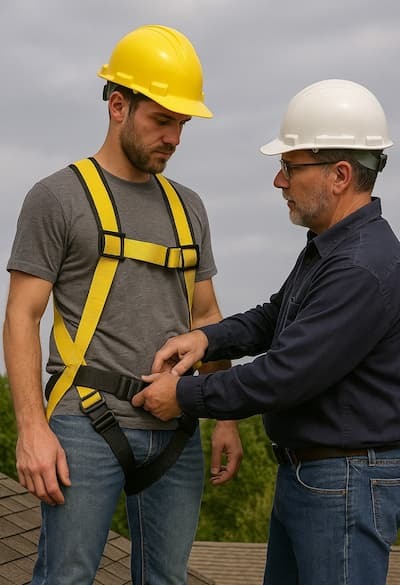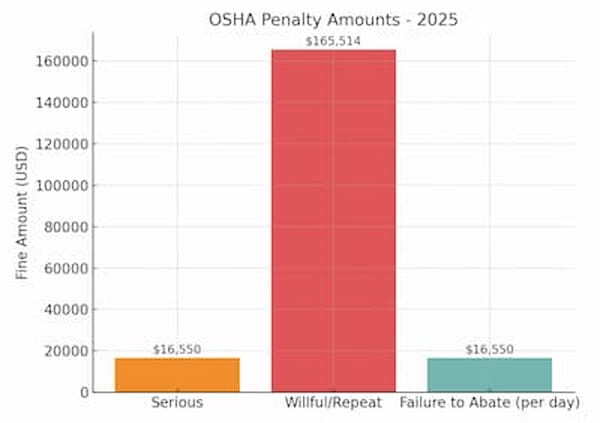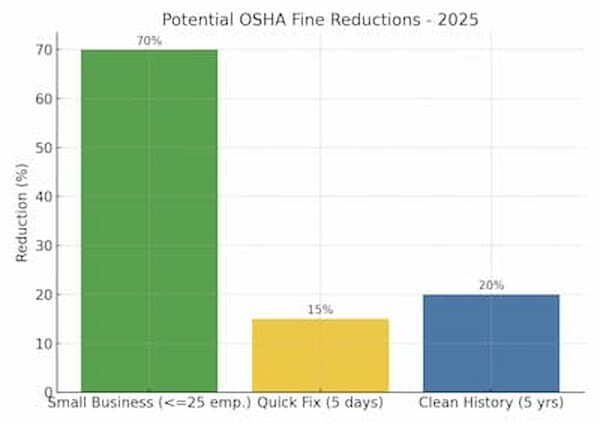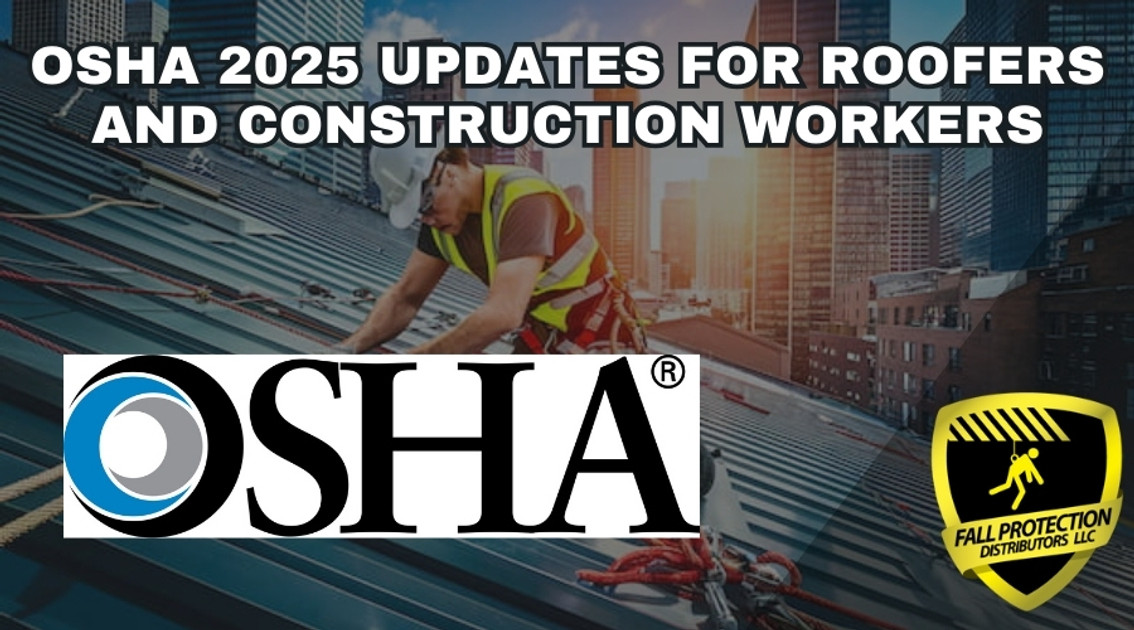OSHA 2025 Updates For Roofers
Posted by Howie Scarboro - CEO Fall Protection Distributors, LLC on Aug 12th 2025

2025 OSHA Updates For Roofers
Critical updates to OSHA regulations every roofer should know.
OSHA changes don’t just sit in a handbook. They land on the jobsite. They decide how soon you tie off, what gear you grab, and how much trouble you’re in if something’s wrong.
Sometimes in the word of fall protection and roofing, things get lost in the shuffle with some many updates out there from OSHA. Some apply to roofing and some don’t but we still need to be aware of the current rules. It seems like once contractors sort of know what they need to be doing out there, the rules change. I’ve done the research and tried to filter out the most important updates for 2025 as they pertain to roofers.
What’s new for 2025? We’ve got new stuff on PPE fit, California moving the goalposts on fall protection, fines going up, and changes to Hazard Communication. Some of it’s local, but most crews should pay attention no matter the zip code.
The New PPE Fit Rule
No more “close enough” when it comes to gear fit.
January 13, 2025 — that’s when OSHA made it official. Every piece of PPE has to properly fit the person wearing it. It no longer matters if it’s a harness, hard hat, gloves, or glasses. They have made it very clear that it is the responsibility of the company to make sure that workers are being provided quality equipment that is sized properly for the work to be done.
We all are aware of workers having to borrow a harness from whoever’s truck is closer when they are in a hurry to get a task completed. Thye are on the jobsite with the straps hanging loose, chest strap halfway to their stomach, and no idea if that equipment has been properly cared for or inspected regularly. Those days are over. Workers need the right size, it’s got to be adjusted properly, and you’d better be able to show you checked it.

This is probably the most impactful rule clarification of the year. Here is an easy remedy, keep a few sizes in the tool trailer or Jobox. When you bring someone on, properly fit the harness, maintain a list of all worker’s sizes and preferences. This small investment will pay dividends in the long run and imagine the look on an OSHA inspector’s face when the safety manager shows him a complete backup inventory of PPE gear that is properly sized for each worker.
Try to source harnesses with a wide range of size adjustment. For instance, I have been providing the same harness to roofers for years, and of the hundreds that go out each year, I get a request for another size maybe once a year. We stock the Malta Dynamics B2002 Warthog Harness in the Lg/XL size and it seems to fit almost everyone. If you add a set of Malta Dynamics Trauma Straps, you can provide workers with a very adjustable harness equipped with lifesaving straps to prevent Suspension Trauma during falls.
Fall Protection Now Starts At Six Feet In California
Six feet is the new standard. Doesn’t matter if you’re nailing sheathing or fixing two shingles.
July 1, 2025 — California drops the trigger height for residential fall protection to six feet. That’s for pretty much everything: sheathing, underlayment, shingles, repairs. Even though most of you reading this aren’t from California, pay attention to this.
What about the old 15-foot trigger? Well, it’s gone now. All of the old exceptions are now void including controlled access zones. The only exception now is to get a site plan from a Qualified Person that says there are no other options. Good luck getting someone to sign off on that simply because it’s faster.
Even if you don’t work in California, this is worth adopting. Crews won’t have to remember different rules from one state to another, and it keeps you in line with federal OSHA. This rule just makes sense and nobody can argue that fact without citing time savings as their reason.
Higher OSHA Penalties In 2025

Fines are bigger this year, but there are a few ways to knock them down.
OSHA fines went up again in January. Here’s the current ceiling:
- Serious violations: $16,550 each
- Willful or repeat violations: $165,514 each
- Failure to fix an issue: $16,550 per day until it’s done
In fiscal year 2023, OSHA collected about $204 million in penalties. None of that goes back to OSHA—they’re funded by Congress—but it still shows how much gets handed out when companies miss the mark.
Now for the part a lot of folks don’t realize: as of July 14, 2025, there’s a new set of penalty reduction guidelines. Small businesses with up to 25 employees can now qualify for a 70% size-based reduction (previously you had to have 10 or fewer). If you fix the hazard fast—think within five days—you might get a 15% quick-fix credit. And if you’ve kept a clean OSHA record for five years, you could see a 20% history credit.

Those breaks don’t mean you should treat citations lightly. The size of the fine depends on how serious OSHA says the hazard is, your history, your good faith efforts, and whether you fix the problem right away. OSHA releases reports about workplace inspections that resulted in multiple violations that can easily cost more than the profit for the whole month. That’s why a solid safety program and quick action are your best insurance against fines—and accidents.
Hazard Communication Updates
Labels and Safety Data Sheets are changing to match global standards.
If you touch chemicals on a jobsite—primers, cleaners, sealants—you’re in this too. The Hazard Communication Standard is getting updated. The changes bring U.S. labels and SDSs closer to the global system.
Deadlines to be 100% compliant are a couple years out. But it’s smarter to update your program now so you’re not scrambling later.
How to stay ahead
Knock this out now and you won’t be chasing problems later.
- Check your gear – Look at what you’ve got. Does it fit the person using it? Adjust it. Write it down.
- Change your trigger height – Six feet. Everywhere. Just do it.
- Update HazCom – Make sure SDSs are up to date and easy to find.
- Keep records – Training logs, inspections, fit checks. The boring stuff that keeps fines away.
Quick FAQ
Popular questions from roofers.
Do I need to buy multiple more harness sizes?
Well you have to ensure that workers have the right equipment, but the good news is that today’s harnesses have a wide fitment range to cover most workers body types. If someone can’t get a proper fit with what you’ve got, then yes it’s very easy to bring in something that provides the right fit.
Is six feet the fall protection trigger rule everywhere?
Not officially, but close enough that you should begin treating it that way. It is simpler and easier to remember if we just go 6-foot across the board.
What’s the maximum fine in 2025?
$165,514 for willful or repeat violations. Serious violations at $16,550.
Does the PPE fit rule apply to the boss or self-employed workers?
No, OSHA guidelines only apply to employees. However, don’t be foolish and use that as an excuse to not work safe while using the best possible equipment.
Final Word
Safety first, savings second — but both matter in 2025.
OSHA’s updates this year aren’t small changes. The PPE fit rule means no more guessing on harness size. California’s six-foot trigger makes early tie-off the smart move everywhere. And the penalty numbers? They’re big enough to ruin a good month in one bad day.
But here’s the thing — you’ve got more power than you think. A solid safety program, quick hazard fixes, and a clean record can shave a big chunk off a citation if one comes your way. That’s money back in your pocket and less stress hanging over your crew.
End of the day, it’s simple. Gear that fits. Tie off sooner. Fix hazards fast. Keep records. Do that, and you’re not just avoiding fines — you’re sending everyone home in one piece. And that’s the real win.

